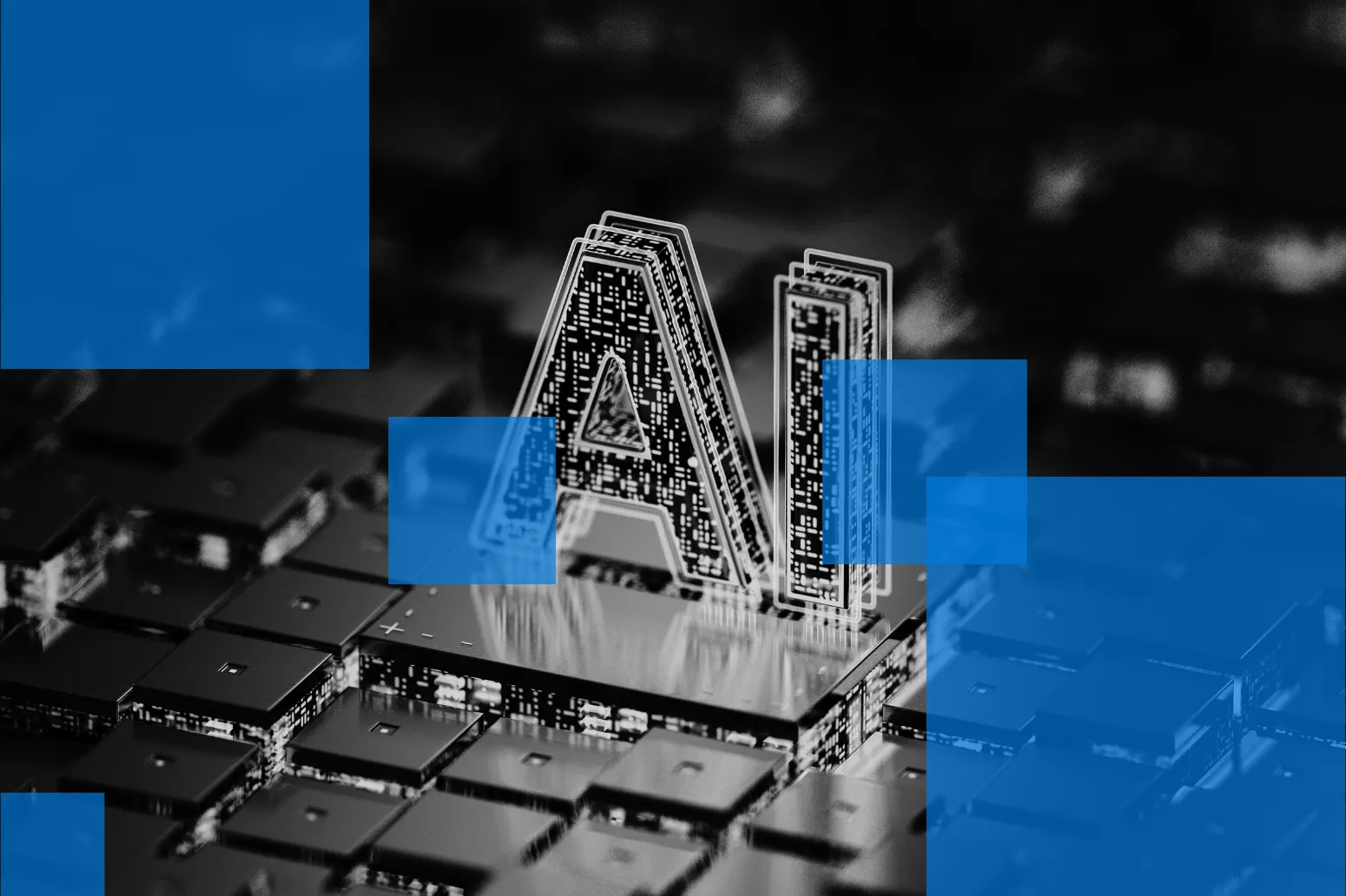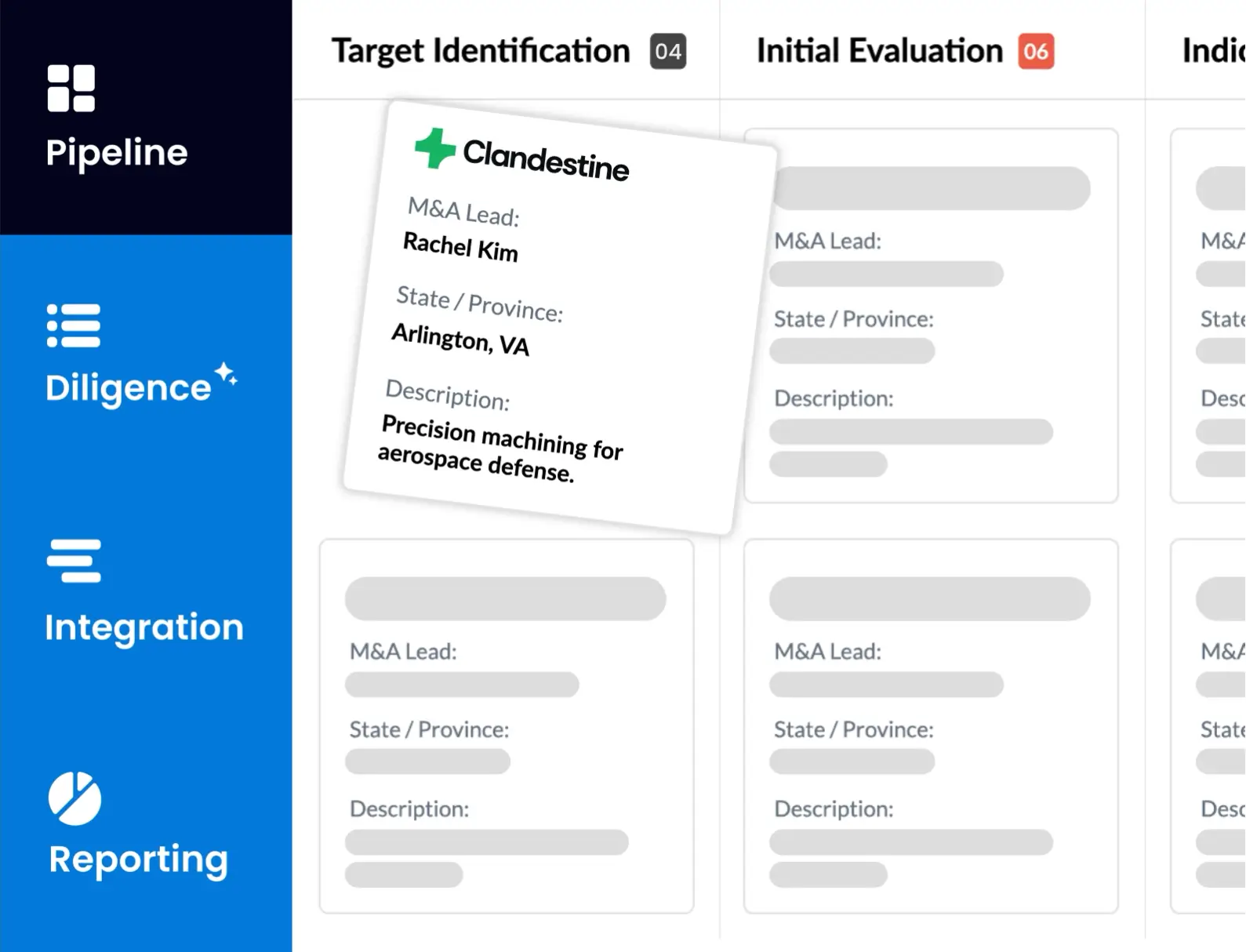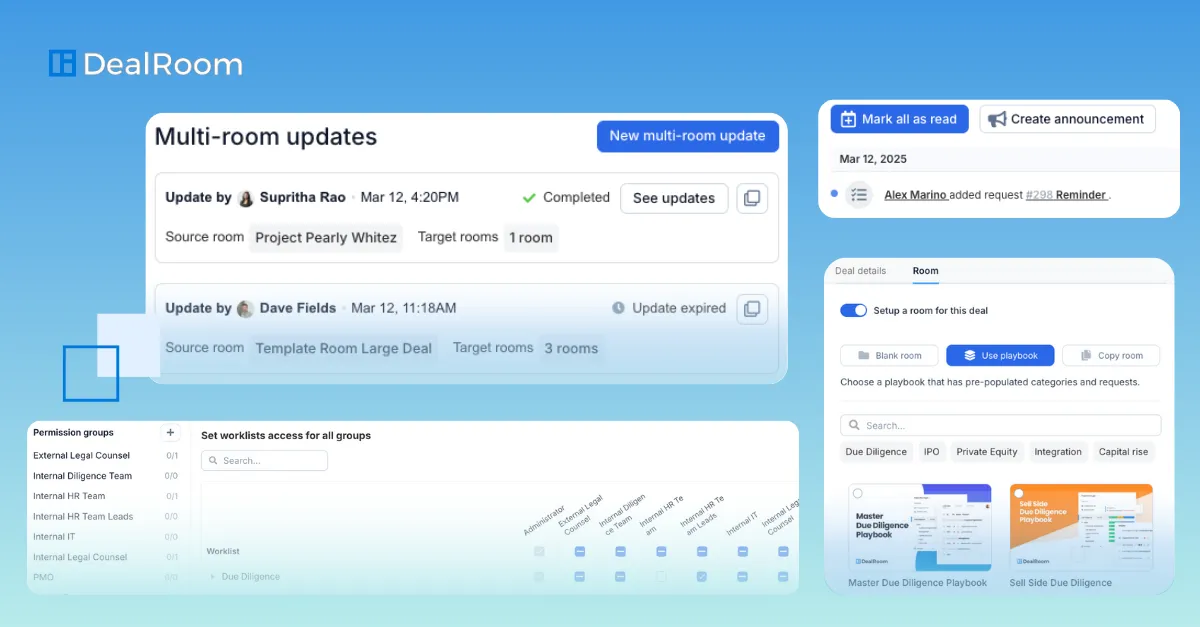Artificial Intelligence (AI) is changing how companies handle mergers and acquisitions (M&A). By using smart technology, businesses can now review thousands of documents quickly, spot hidden risks, and make better decisions.
Companies are finding creative ways to use AI throughout the M&A process. During the pre-deal phase, AI helps with target identification and initial screenings. In the execution stage, AI-powered document review speeds up due diligence by analyzing contracts and financial records.
In fact, AI tools can substantially reduce the time spent on due diligence. They also increase accuracy and uncover insights human reviewers might miss. After the merger, AI assists with data integration and monitoring the success of the deal.
Real examples show AI's growing importance in M&A. Some firms use AI to process technical due diligence more effectively. Others leverage it for rapid data consolidation with lower risk. As technology advances, we expect to see even more innovative applications that transform how companies approach these complex transactions.
In this guide, we’ll explore some of the common and emerging ways companies use AI in M&A, including use cases in pre-deal stages, AI use cases in deal execution, and AI use cases in post-merger integration. We’ll also discuss the benefits of AI in M&A, as well as its potential challenges and limitations and where it’s heading in the coming years.
In this article:

“AI isn’t about replacing deal teams—it’s about giving them leverage. The challenge is architecting data rooms for accuracy and structured analysis, not hallucination.”
- Kison Patel DealRoom Founder & Executive Chairman
Shared at The Buyer-Led M&A™ Summit (watch the entire summit for free here)
AI Use Cases in Pipeline Sourcing & Strategy and Diligence

Artificial intelligence is transforming the early phases of M&A processes like pipeline sourcing and diligence, making them more efficient and data-driven. AI technologies streamline workflows and provide deeper insights during these crucial pre-deal activities.
Target identification and screening
AI algorithms excel at scanning market data to identify potential acquisition targets matching specific criteria, such as financial performance, growth potential, and strategic fit. Machine learning models (MLM) enhance this process by recognizing patterns in historical deals and industry trends, uncovering opportunities that human analysts might overlook.
Natural language processing (NLP) tools monitor news, social media, and industry publications to detect early signals about potential targets. These tools track sentiment shifts and emerging business challenges that might make a company receptive to acquisition offers.
AI-powered platforms also assess compatibility between potential partners by analyzing corporate cultures, customer bases, and operational alignments. This reduces the risk of integration problems after deals close.
Due diligence automation
AI significantly accelerates the due diligence process by automating document review and data analysis. NLP technology can examine thousands of contracts, financial statements, and legal documents in hours rather than weeks.
Smart contract analysis tools identify potential risks, unusual clauses, and compliance issues, flagging them for human review while automating routine processing tasks.
Key due diligence applications for AI include:
{{cards-list_start}}
- Contract analysis and risk identification
- Automatic financial statement review
- Compliance verification across multiple jurisdictions
- Intellectual property assessment
- Environmental, social, and governance (ESG) evaluation
{{cards-list_end}}
These systems improve accuracy by eliminating human error in repetitive tasks. They also create standardized, searchable databases of findings that deal teams can query instantly.
Valuation and deal structuring
You can enhance valuation models with AI by incorporating more variables and processing alternative scenarios quickly—in far less time than it would take humans to assess valuation manually. Machine learning algorithms analyze historical transaction data to identify pricing patterns and optimal deal structures.
Predictive analytics helps negotiators understand how different terms might impact post-merger performance. These tools simulate various deal structures to optimize outcomes for all parties.
AI valuation tools can:
{{info-list_start}}
- Process unstructured data like social media sentiment
- Incorporate real-time data related to market conditions
- Adjust for industry-specific risk factors
- Model potential strategic alignment more accurately
{{info-list_end}}
Advanced systems even recommend optimal timing for deal announcements based on market conditions and competitor activities. This strategic insight helps companies maximize deal value and minimize transaction risks.
AI Use Cases in Legal & Compliance

Artificial intelligence transforms the execution of mergers and acquisitions by streamlining complex processes, enhancing accuracy, and reducing the time needed to complete transactions. Modern AI legal & compliance tools support critical aspects of deal execution including negotiation, regulatory compliance, and team collaboration.
Negotiation support
AI systems now assist M&A teams in developing more effective negotiation strategies by analyzing historical deal data. These systems can predict potential outcomes based on similar past transactions, giving negotiators valuable leverage points.
NLP algorithms evaluate contract terms and suggest modifications that align with company objectives. This helps negotiators identify problematic clauses quickly. Sentiment analysis tools monitor communications between parties, helping deal teams understand the other party’s priorities and concerns that might not be explicitly stated.
AI-powered valuation models generate real-time adjustments during negotiation sessions, allowing teams to immediately assess how proposed changes affect deal value.
Regulatory compliance
You can significantly reduce the compliance burden in M&A deals by automatically screening for regulatory issues across multiple jurisdictions with AI. Machine learning algorithms review thousands of documents to identify potential antitrust concerns and flag market concentration issues that might trigger regulatory scrutiny.
Compliance monitoring systems continuously track changing regulations across regions, ensuring deals remain compliant throughout the execution phase. AI tools also create comprehensive audit trails of all compliance-related activities, which are invaluable during regulatory reviews and potential challenges after deal completion.
Communication and collaboration
AI-powered virtual data rooms have evolved beyond simple document storage, now offering intelligent document classification and retrieval capabilities that streamline deal execution. NLP facilitates multilingual collaboration, automatically translating documents and communications for global M&A teams—eliminating language barriers that frequently slow deal progress.
AI scheduling assistants coordinate meetings across different time zones and automatically prioritize critical decision points based on the deal timeline. Smart communication platforms analyze discussion patterns and highlight unresolved issues that require immediate attention, ensuring that important details don’t fall through the cracks during the complex execution phase.
AI Use Cases in Post-Merger Integration

AI transforms post-merger integration by streamlining processes, enhancing decision-making, and maximizing value creation. AI tools analyze vast amounts of data to identify integration opportunities that human teams might miss and accelerate the merger timeline.
Cultural integration
AI technologies offer powerful solutions for addressing cultural integration challenges during mergers. NLP tools can analyze communication patterns across both organizations, identifying potential cultural misalignments before they become problematic.
Sentiment analysis algorithms monitor employee feedback through surveys and social media, providing real-time insights into workforce morale during the transition. This allows leadership to address concerns proactively rather than reactively.
AI-powered matching systems help identify complementary skillsets between organizations, facilitating more effective team restructuring. These systems analyze employee profiles, work history, and performance metrics to suggest optimal reporting structures.
AI-driven virtual collaboration platforms facilitate cross-company integration sessions, which are particularly valuable for geographically dispersed teams. They automatically translate communications and identify common ground between different corporate cultures.
Operational alignment
Many AI tools can identify and implement operational alignments during post-merger integration. Algorithms can analyze financial and operational data from both companies to identify redundancies and optimization opportunities that humans might overlook.
Process mining tools map existing workflows across both organizations, automatically identifying best practices and inefficiencies. This enables more data-driven decisions about which systems to retain, modify, or replace.
AI-powered predictive models also forecast the impact of different integration approaches on key performance indicators. These models run thousands of simulations to determine optimal integration sequencing and timing.
Supply chain optimization algorithms consolidate vendor relationships and identify opportunities for volume-based discounts. They can also predict potential disruptions and suggest mitigation strategies specific to the newly combined entity.
In addition, intelligent automation tools rapidly standardize repetitive processes across organizations, reducing manual effort and error rates while accelerating integration timelines.
Performance monitoring
Many AI systems provide continuous, real-time monitoring of post-merger integration performance across all business dimensions. Machine learning applications track key integration milestones against projected timelines, alerting management to potential delays before they impact the overall integration schedule.
Advanced analytics dashboards such as DealRoom’s Synergy Tracker visualize synergy capture progress. Some analytics platforms leverage AI algorithms to automatically highlight areas that are underperforming compared to forecasts. These tools can also identify correlations between integration activities and business outcomes.
NLP monitors customer sentiment across review sites, social media, and support channels, helping leadership understand how the merger is affecting the customer experience in real time. Anomaly detection algorithms also identify unexpected patterns in financial and operational data that might indicate integration issues requiring attention. These systems grow more accurate over time as they learn the patterns of the newly combined organization.
AI-powered predictive models continuously refine forecasts for post-merger performance based on actual results. This provides increasingly accurate projections as integration progresses.
Real-World Examples of Uses of AI in M&A

AI is transforming how mergers and acquisitions happen in practical, everyday ways. These real-world examples show how companies are using AI tools to make deals smoother and more successful.
Document review acceleration
Document review is one of AI’s most prominent use cases in M&A, and numerous companies have already realized the advantages of AI-powered document review:
- SAM uses DealRoom AI to reduce contract review time. It extracts key terms from acquisition target documents into concise reports.
- IVC Evidensia leverages DealRoom AI to summarize lengthy legal documents, eliminating tedious manual reviews.
- Modigent saves several hours per deal by using DealRoom AI to locate critical information in extensive documentation.
Enhanced deal sourcing
Andrew Hadley reported that Grata, an AI-powered deal-sourcing platform, helped his firm quickly identify prospects for over 15 projects that might have otherwise been missed.
Cultural due diligence
Deloitte consultants demonstrated how AI can assess company culture compatibility. Their system analyzed employee reviews on Glassdoor and Indeed, comparing cultural traits and predicting potential integration challenges.
Revenue synergy identification
Bain & Company states that feeding generative AI with sales data, pricing models, and customer demographics from both companies can quickly identify cross-sell opportunities. This allows acquirers to include higher revenue synergy projections with greater confidence.
Risk assessment through sentiment analysis
In one case, an AI platform analyzing social media and news content identified growing negative sentiment about a target's product quality. This red flag prompted the acquirer to demand stronger guarantees in the final deal terms.
Benefits of AI in M&A
AI technology is transforming merger and acquisition processes by offering significant advantages to companies. These benefits are changing how deals are evaluated, negotiated, and completed.
Increased efficiency and speed in deal-making
AI systems can process enormous amounts of data rapidly, dramatically shortening the timeline for M&A transactions. Deal teams can review documents in days rather than weeks, enabling companies to complete transactions faster and respond rapidly to market opportunities.
Enhanced accuracy in valuation and risk assessment
AI tools improve the precision of company valuations by analyzing broader datasets and identifying patterns humans might miss. These systems can predict and assess risks associated with potential acquisitions. They also identify potential regulatory issues, cultural mismatches, and financial concerns with greater accuracy.
Improved decision-making through data-driven insights
M&A professionals can make better-informed decisions using AI-generated insights. The technology uncovers hidden connections between market trends, company performance, and potential alignments. These data-driven insights help executives evaluate strategic fit more effectively.
Cost reduction through automation of repetitive tasks
By automating routine activities like document review and data analysis, AI significantly cuts transaction costs. Due diligence processes that once required large teams of analysts can now be handled more efficiently with AI support. Companies report substantial cost savings when using AI tools in their M&A processes.
Challenges and Limitations
While AI offers significant benefits to M&A processes, there are a few challenges that may limit its effectiveness. Understanding these limitations is crucial for companies planning to implement AI in their merger activities.
Data privacy and security concerns represent one of the most pressing issues. When conducting due diligence using AI tools, sensitive financial and operational data may be vulnerable to breaches. Companies must ensure robust security protocols are in place.
High implementation costs create barriers to entry for smaller firms. Implementation costs can include:
- Custom AI system development
- Staff training
- Ongoing maintenance
- Integration with existing systems
These costs can be prohibitive, especially considering that AI technologies may not deliver immediate ROI.
Data quality and availability significantly impact AI effectiveness in M&A transactions. AI tools require extensive, clean datasets to function properly. M&A teams may face challenges when target companies have incomplete or poorly structured data, reducing the reliability of AI-generated insights.
Another challenge is that AI systems may perpetuate existing biases found in training data, potentially overlooking promising opportunities or misidentifying risks.
Cultural integration issues also remain difficult for AI to address effectively. While AI does an outstanding job of analyzing quantitative data, it struggles with cultural compatibility assessment, which is crucial for successful post-merger integration.
Future Trends for AI in M&A

The M&A landscape is evolving rapidly, and AI technologies are leading the way. Experts predict that generative AI will see increased adoption for contract drafting and analysis in the coming years. These tools will help dealmakers create more precise legal documents while reducing the time spent on reviewing complex agreements.
AI constantly generates new ways to create value in M&A transactions. One exciting development is the integration of blockchain technology with AI for more secure and transparent processes. This combination will enable better tracking of assets and smoother verification procedures during deals.
AI tools are expanding to better handle cross-border M&A transactions. These technologies will help navigate different regulatory environments and cultural differences that often complicate international deals. In addition, advanced language processing will reduce communication barriers between global teams.
The application of AI is also growing in importance for analyzing ESG factors. AI systems will increasingly help companies:
- Identify ESG risks in potential acquisition targets
- Measure sustainability impacts of merged operations
- Predict regulatory compliance issues
- Evaluate corporate culture compatibility
AI-driven target selection models will continue to advance, adapting to new market conditions and providing more accurate synergy predictions. These tools will leverage historical data alongside real-time market intelligence.
Frequently Asked Questions
AI technology has transformed how mergers and acquisitions operate in today's business landscape. Here are answers to common questions about AI's role in M&A processes and outcomes.
Can AI predict the success of a merger or acquisition?
AI systems can analyze historical M&A data to identify patterns associated with successful deals. These prediction models examine financial metrics, market conditions, and company compatibility factors to estimate success probabilities.
Current AI tools can assess risks associated with M&A by evaluating financial statements, market trends, and integration challenges. The predictive accuracy varies depending on data quality and algorithm sophistication.
However, AI predictions have limitations. They struggle with unprecedented market disruptions and qualitative factors like cultural fit. Studies show AI performs best when used alongside human judgment rather than independently.
For optimal results, companies should:
- Use AI to analyze past similar transactions
- Combine AI insights with industry expert knowledge
- Continuously update models with new data
- View predictions as guidance, not certainty
Is AI replacing human roles in M&A?
AI is transforming M&A roles rather than replacing them entirely. In legal due diligence, AI primarily functions as a document reviewer, analyzing contracts and legal documents faster than humans alone could manage.
AI excels at data-intensive tasks like document review, financial analysis, and preliminary valuation. These tools can process thousands of documents in days versus weeks for human teams, substantially reducing costs.
Human expertise remains essential for:
- Strategic decision-making
- Negotiation tactics
- Cultural integration planning
- Relationship management with stakeholders
Many firms now use hybrid approaches. For example, AI flags potential issues in contracts while lawyers interpret significance and negotiate terms. This collaboration typically results in more thorough due diligence with fewer personnel hours.
{{highlight_start}}
What industries are leading in AI adoption for M&A?
The financial services sector leads AI adoption in M&A, with investment banks implementing sophisticated algorithms for deal valuation and target identification. Close behind is the technology sector—particularly in software company acquisitions—often using their own AI solutions during deal execution.
The top industries using AI in M&A include:
- Financial Services - Using predictive analytics for market timing and valuation
- Technology - Employing AI for technical and IP due diligence
- Healthcare - Analyzing clinical data and regulatory compliance
- Manufacturing - Assessing supply chain integration potential (i.e. vertical integration through forward integration or backward integration)
The pharmaceutical industry has recently increased AI adoption, using machine learning to evaluate R&D pipelines and patent portfolios of potential acquisition targets.
Regional differences exist, with North American and European firms generally ahead in implementation. Asian markets, particularly in Japan and Singapore, are rapidly closing this gap with significant AI investments.
{{highlight_end}}
How can small and medium-sized enterprises leverage AI in M&A?
Small and medium-sized enterprises (SMEs) can access AI for M&A through cost-effective options like subscription-based platforms. These tools offer affordable alternatives to the custom solutions often used by larger corporations.
For target identification, SMEs can utilize AI-powered market intelligence platforms. These platforms scan for acquisition opportunities matching specific criteria. This reduces reliance on expensive advisors during the early stages.
During due diligence, cloud-based AI document review services can analyze contracts and financial statements at a fraction of traditional costs. Some platforms offer pay-per-use models that align with smaller transaction volumes.
Practical steps for SMEs include:
- Starting with focused AI tools solving specific M&A challenges
- Considering shared services with industry peers
- Utilizing AI-enhanced advisory firms offering tiered pricing
- Adopting open-source AI tools with customization options
Post-merger, affordable AI project management tools can help track integration milestones and identify potential issues early.
How can industry 5.0 and AI affect mergers and acquisitions?
Industry 5.0's focus on human-machine collaboration is reshaping M&A processes. Unlike Industry 4.0's emphasis on automation, Industry 5.0 integrates AI with human expertise to enhance decision quality.
In target selection, AI systems can analyze manufacturing capabilities, supply chain resilience, and sustainability metrics. All these are increasingly valuable in Industry 5.0 contexts.
Companies with advanced human-machine collaborative environments often command premium valuations. During integration planning, AI helps model optimal combinations of human workers and automated systems between merging organizations.
Studies show M&A teams equipped with AI tools achieve better post-merger outcomes when they balance automation with human capabilities.
Key Industry 5.0 impacts on M&A include:
{{cards-list_start}}
- 1. Higher valuation of companies with mature human-AI collaboration frameworks
- 2. Increased focus on worker skill complementarity during integration
- 3.Growing importance of ethical AI governance in acquisition targets
- 4. New due diligence categories evaluating human-machine interaction quality
{{cards-list_end}}
Key Takeaways
- AI significantly reduces time spent on due diligence while improving accuracy in document review and risk assessment.
- Companies using AI in M&A can better identify suitable acquisition targets and uncover hidden value opportunities competitors might miss.
- The integration of AI throughout the merger process helps organizations make data-driven decisions and measure post-merger success more effectively.
AI is revolutionizing the M&A landscape, from deal sourcing and due diligence to post-merger integration. As we’ve seen, AI empowers companies to make faster, more informed decisions, reduce transaction costs, and uncover opportunities that traditional processes might miss. Its ability to automate repetitive tasks, analyze vast amounts of unstructured data, and deliver real-time insights is reshaping how M&A professionals work at every stage of the deal lifecycle.
{{widget-cta2}}
However, leveraging AI in M&A isn’t just about efficiency—it’s also about gaining a competitive edge. The firms leading the charge are those adopting smart, flexible platforms that integrate seamlessly into their workflows.
That’s where DealRoom AI stands out, helping deal teams move faster and smarter. From auto-summarizing lengthy documents to extracting critical insights, DealRoom AI minimizes manual work and reduces the time required for contract analysis by up to 80% and reduces legal costs by up to 60%. Real-world users—like Modigent, IVC Evidensia, and SAM—have already seen how DealRoom AI helps streamline complex processes and improve deal outcomes. Book a demo today to learn more.



















.png)
.webp)



.webp)
.webp)
.webp)





.png)
.png)
.png)
.svg)

.svg)
.png)
